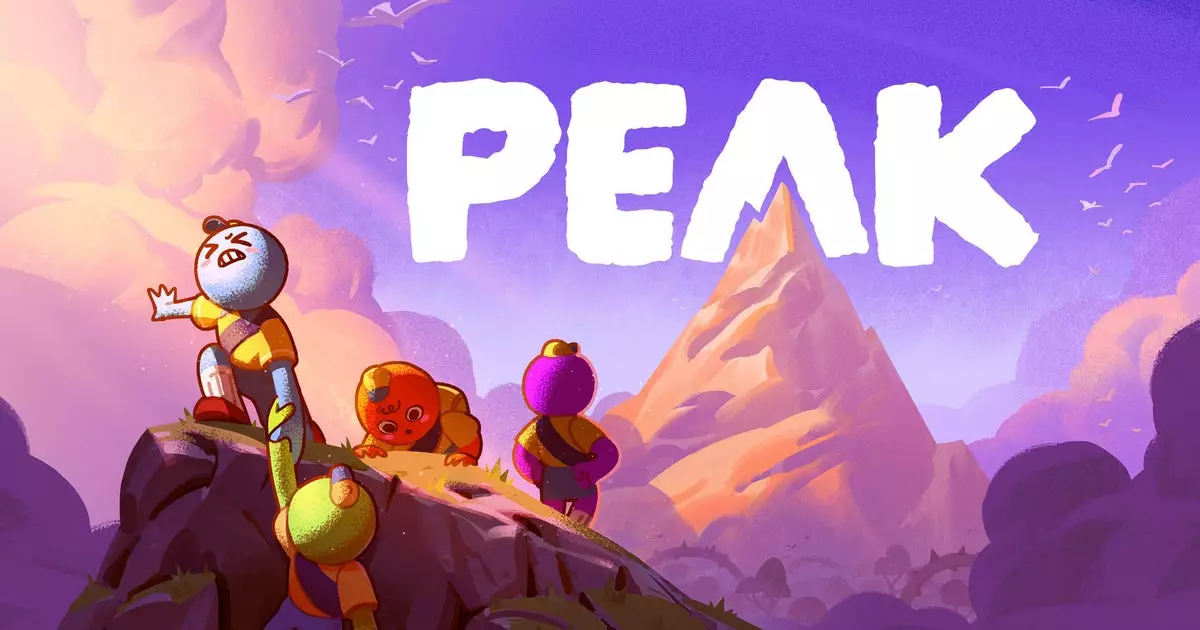When discussing the creative process behind video games, one might assume that grand ideas germinate from meticulous planning or extensive brainstorming sessions. However, the creation of Peak, an engaging co-op video game that invites players to scale virtual mountains alongside their friends, tells a different tale. It is a vibrant hack that showcases how spontaneity, a dash of jealousy, and collaboration can culminate in a game that captures both hilarity and chaos. This intriguing narrative was shared by the developers, particularly from Aggro Crab and Landfall, who came together during a game jam event.
Nick Kaman, the head of Aggro Crab, candidly mentions that their motivation to embark on this new venture was “mostly from jealousy.” This rather bold assertion, presented in a lighthearted manner, sheds light on the often-unspoken truths within the competitive landscape of game development. Kaman expressed a sentiment that resonates deeply within the industry: witnessing peers achieve unexpected success can spur a desire to match or exceed that accomplishment. The unexpected success of Landfall’s previous game, Content Warning, ignited a fire within Kaman and his team. They had previously committed more than three years of hard work on Another Crab’s Treasure, which, while successful, demonstrated a grueling timeline that could lead to burnout—a common pitfall in the world of indie gaming.
The Game Jam: A Recipe for Creativity
The decision to join Landfall for a month-long game jam in Korea was both a strategic and a serendipitous move that allowed Aggro Crab to rethink their approach to game design. “We locked tf in for a month” encapsulates the team’s commitment to fully immersing themselves in the creative process. Their unique approach included bringing necessary equipment to an Airbnb, where they would not only create but also establish an innovative workspace by assembling office furniture purchased from IKEA. This choice rewards exploration beyond a traditional office setting, suggesting that an invigorated environment can breed innovative ideas.
The humble origins of Peak can be traced back to a spontaneous conversation that took place in a hot tub situated in Sweden, where the concept first saw the light of day. Initially envisioned as a more nebulous endeavor, the idea of players as “lost scouts on an island” evolved into a cohesive narrative filled with the potential for both humor and calamity. It is this interplay of spontaneity and creative freedom that defined the game’s development. The duo of Aggro Crab and Landfall exemplifies how collaboration and shared enthusiasm can breathe life into a project that started off as a vague idea.
Serendipity, Collaboration, and the Essence of Peak
While Peak’s gameplay serves as a testament to the power of fun and chaos, the process of its creation underscores a broader theme in the indie game community: that genuine collaboration can lead to magical experiences. The intensity of their month-long session not only birthed a game but also solidified relationships between the developers. As Kaman shares fond memories of both working diligently on the game and indulging in food while brainstorming, the joy of creation becomes palpable.
The process of developing Peak highlights a crucial lesson in modern game design: the traditional trajectories of game development can be turned upside down. Peak, while evolving from mere sparks of creativity, showcases the importance of adaptability and awareness within a highly competitive space. The success of the game is certainly noteworthy; however, it is critical to understand that such fortuitous outcomes are not easily replicable. The seasoned experience among the developers positioned them favorably to seize the opportunity of the game jam rather than rely on naïve impulses.
Reassessing Success Metrics in Gaming
Though Peak has enjoyed considerable success in sales, it’s vital to differentiate between the market’s reception and actual product quality. The notion that a small timeframe can yield great results often misleads aspiring developers; the underlying expertise, vision, and dedication of seasoned studios like Aggro Crab and Landfall cannot be overlooked. Their collaborative spirit and ability to harness occasional envy can spark innovation, but it’s essential for newcomers to recognize that sustainable success demands far more than speed. As we reflect on this story, it becomes clear that the industry’s future hinges on the fusion of creativity with meaningful partnerships—a recipe for truly transformative game development.


Leave a Reply